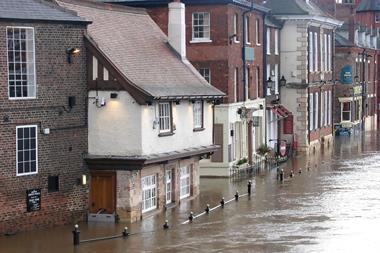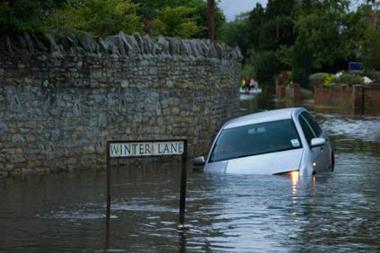End of government-industry deal poses threat to cover in flood-risk areas

Properties worth £214bn could be left uninsured from the summer of this year onwards, when the government-industry deal on covering high-flood risk area begins to run out.
Property search firm SearchFlow has calculated that around a quarter of all UK properties could be unable to secure insurance against flooding due to the end on 30 June 2013 of the ‘statement of principles’ agreement between the government and the insurance industry.
This could mean the owners of these properties are unable to insure their properties from summer 2012 as insurers become unwilling to offer policies that expire after the agreement expires, leaving them in breach of their mortgage contract.
Being unable to secure cover would also make it harder to sell or remortgage the properties, thus reducing their overall value.
SearchFlow business development director Richard Hinton said: “The end of the principles agreement between the ABI and the government could make flooding a hugely contentious issue during the conveyancing process, when professional conveyancers have to consider the potential risks a property faces. Although buyers will be able to obtain flood insurance for the next few months, the long-term prospects of properties at risk of flooding are potentially bleak.
“Especially for buyers purchasing in high-risk flood areas, the possibility of very high premiums, significant reductions in value, less access to mortgage finance – even action taken by the mortgage lender due to breach of the mortgage agreement – is high. Conveyancers looking after their clients’ best interests must ensure they are aware of the risk of flooding and ensure their clients appreciate the danger posed by the end of the ABI agreement.
“One of the main principles in the ABI’s agreement was that the government improve flood defences in high-risk areas. The fact this has not been done means an extension to the agreement is unlikely. This is worrying news for those buying in areas with high-flood risk.”






































No comments yet